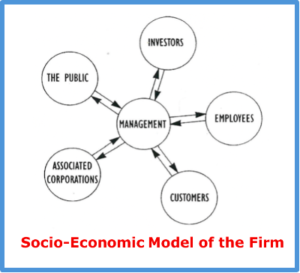AI versus Humans – The Salient Issue of Our Time
Having solved the problems of global consciousness, the coming internet, redesigning capitalism and the 2020 US Election (ha ha!), we now turn to the most salient technology of our times – artificial intelligence (AI). The heart of this issue focuses on the relationship between AI and humans. A good example is TechCast’s study on “AI and Future Work.” We found that the threat of mass unemployment due to automation is likely to be resolved by pioneering a new frontier of “creative work” that can’t be done by intelligent machines.
Let’s start by defining AI in terms of the human tasks it is capable of automating potentially. The figure “Structure of Consciousness” shows the hierarchy of different tasks or functions performed by human consciousness, or human intelligence (HI). As noted in the figure, the arrow indicates how AI is automating progressively the lower-order tasks, forcing humans to focus on the realm of higher-order tasks.

This raises the big question – “How much of HI is likely to be automated, and how much will humans continue to do? To get a handle on this profound issue, we frame the problem in terms of the following 15 functions that roughly comprise HI.
1. Perception Sensory experience and awareness through touch, sight, sound, smell, taste.
2. Memory Information encoded, stored, and retrieved for future action.
3. Learning Knowledge or skill acquired by instruction or study.
4. Knowledge Understanding of a science, art, or technique for some purpose.
5. Decision A determination arrived at after consideration.
6. Emotion Mental reaction (anger, fear, etc.) experienced as strong feeling.
7. Empathy Experiencing vicariously the thoughts and emotions of others.
8. Purpose An object or end chosen to be attained.
9. Will Ability to desire, choose, consent to some action.
10. Values Things we think to be of relative worth, utility, or importance.
11. Beliefs Some idea that is considered true or held as opinion.
12 Imagination Novel sensations and ideas gained without input of the senses.
13. Intuition Attaining knowledge without rational thought and inference.
14. Peak Experience Altered state of consciousness characterized by euphoria.
15. Vision Guiding thought, concept, or object formed by the imagination.
Some of this is being done by machines now. For instance, see this example showing that a third generation of AI is coming that goes beyond deep learning to simulate human empathy. In this example, an avatar listens to a soldier talk of his PTSD experiences and coaches him into resolution of the trauma. Obviously, the applications could be huge, from automated psychotherapy to teaching to virtual sex. So we don’t wish to dismiss the prospects for advanced AI.
But we do want to explore the limits of AI. How far up this hierarchy of human thought can AI proceed? And, even if AI can simulate some aspect of human consciousness, what does that mean really? Would it be the same as what people do? Or would it be just a false replica? A rough approximation? A feeble substitute for the real thing? These are difficult and profound questions that bear on the future relationship between AI and HI. Let’s see what we can learn.
When speaking on this topic, we often ask audiences if they think there is a substantial difference between AI an HI. A few brave individuals usually say “No, there is no difference,” but the vast majority (90% or more) insist there is a substantial difference. They may not be able to put their finger on it, but it seems intuitively obvious to most people that humans are unique. Of course, we could be proven wrong as AI matures. That is the nature of this great experiment now underway as science advances. This little TechCast study is our attempt to anticipate the outcome.
After getting your thoughts on framing this issue in Round Two, you will be asked to look over the definitions of each function and estimate if AI will be able to do it in the next few decades without human input. (Yes or No). The results should give us a sound grasp of the profile of artificial intelligence (AI) versus human intelligence (HI). These 15 functions may not define the full range of human consciousness perfectly, but they will serve the rough purpose of this study.
Round Two — Invitation to Help Frame This Study
For the second round of the study, we now invite you to make sure this issue is framed in the most useful way possible. Are important functions missing? Are these defined accurately? Is the problem posed effectively? Should we pose other questions? What else is on your mind?
Please send your best thinking to Halal@GWU.edu. We will use your ideas to improve this study and post them in the next edition of TechCast Research.
Thanks for your support. The TechCast Team





